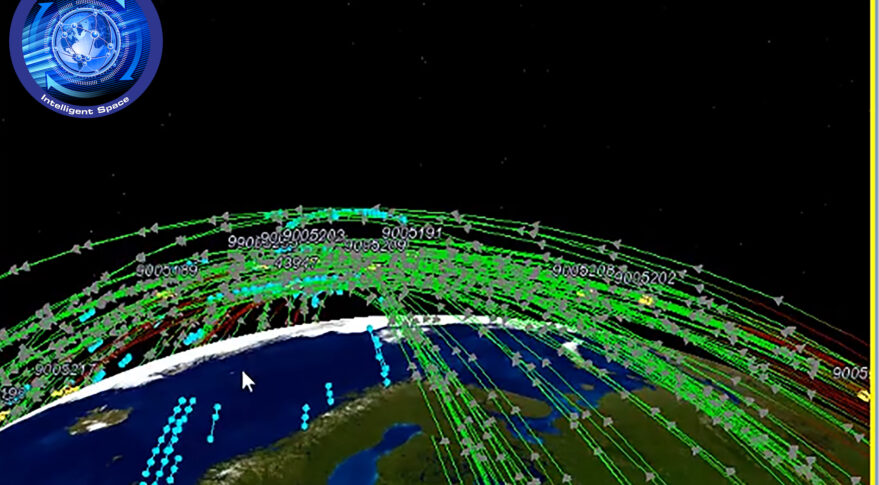
WASHINGTON — Lockheed Martin’s space traffic management software will be used by Germany’s space agency, the company announced April 6.
The German Space Agency at DLR — which operates the German space situational awareness center along with the German Air Force — selected Lockheed Martin’s iSpace, a system that is used by the U.S. military, U.S. intelligence agencies and the government of Australia.
The iSpace system, which Lockheed Martin introduced in 2017, collects data from hundreds of optical, radar, infrared and radio sensors operated by governments, commercial companies and academia to provide space situational awareness.
Lockheed Martin’s program manager for space command and control Jeff Chadwick said iSpace will be used to task German sensors to monitor objects of interest and space events such as collisions, maneuvers, breakups and launches.
Chadwick told SpaceNews that the iSpace system can track up to 300,000 objects. By comparison, the U.S. military’s unclassified space catalog tracks about 30,000 objects. “Our system has a lot of automation,” said Chadwick.”It doesn’t require a lot of human interaction with the catalog.”
As space becomes more congested, customers are worried about collisions with other satellites or with pieces of debris, he said. “We can provide conjunction alerts to allow operators to take a course of action, such as maybe maneuvering their satellites to avoid a collision.”
The sensor tasking feature in iSpace was first developed for the $1.5 billion Space Fence surveillance radar site Lockheed Martin built for the U.S. Air Force on Kwajalein Island in the Republic of the Marshall Islands. The Space Fence tracks satellites and space debris primarily in low Earth orbit.
“We evolved the mission software to really manage multiple sensors and task those sensors to get the right information that you need at the right time,” said Chadwick. “When we developed this product we were really looking at it from an operator’s perspective, how do we make their job easier so they can focus on more important things than just maintaining the catalog.”
Original Text (This is the original text for your reference.)

WASHINGTON — Lockheed Martin’s space traffic management software will be used by Germany’s space agency, the company announced April 6.
The German Space Agency at DLR — which operates the German space situational awareness center along with the German Air Force — selected Lockheed Martin’s iSpace, a system that is used by the U.S. military, U.S. intelligence agencies and the government of Australia.
The iSpace system, which Lockheed Martin introduced in 2017, collects data from hundreds of optical, radar, infrared and radio sensors operated by governments, commercial companies and academia to provide space situational awareness.
Lockheed Martin’s program manager for space command and control Jeff Chadwick said iSpace will be used to task German sensors to monitor objects of interest and space events such as collisions, maneuvers, breakups and launches.
Chadwick told SpaceNews that the iSpace system can track up to 300,000 objects. By comparison, the U.S. military’s unclassified space catalog tracks about 30,000 objects. “Our system has a lot of automation,” said Chadwick.”It doesn’t require a lot of human interaction with the catalog.”
As space becomes more congested, customers are worried about collisions with other satellites or with pieces of debris, he said. “We can provide conjunction alerts to allow operators to take a course of action, such as maybe maneuvering their satellites to avoid a collision.”
The sensor tasking feature in iSpace was first developed for the $1.5 billion Space Fence surveillance radar site Lockheed Martin built for the U.S. Air Force on Kwajalein Island in the Republic of the Marshall Islands. The Space Fence tracks satellites and space debris primarily in low Earth orbit.
“We evolved the mission software to really manage multiple sensors and task those sensors to get the right information that you need at the right time,” said Chadwick. “When we developed this product we were really looking at it from an operator’s perspective, how do we make their job easier so they can focus on more important things than just maintaining the catalog.”









 User Center
User Center My Training Class
My Training Class Feedback
Feedback












Comments
Something to say?
Log in or Sign up for free